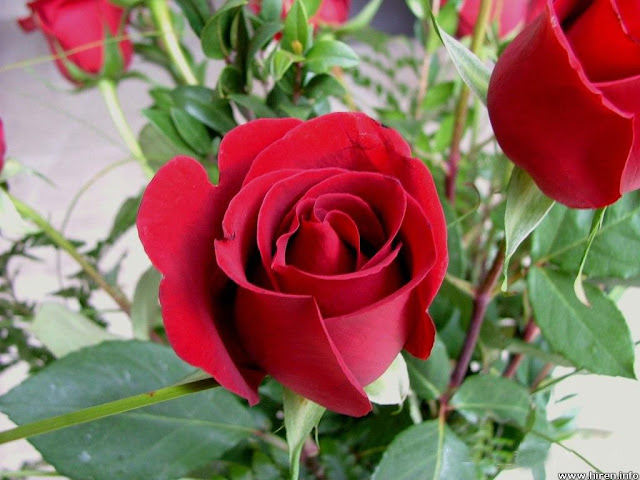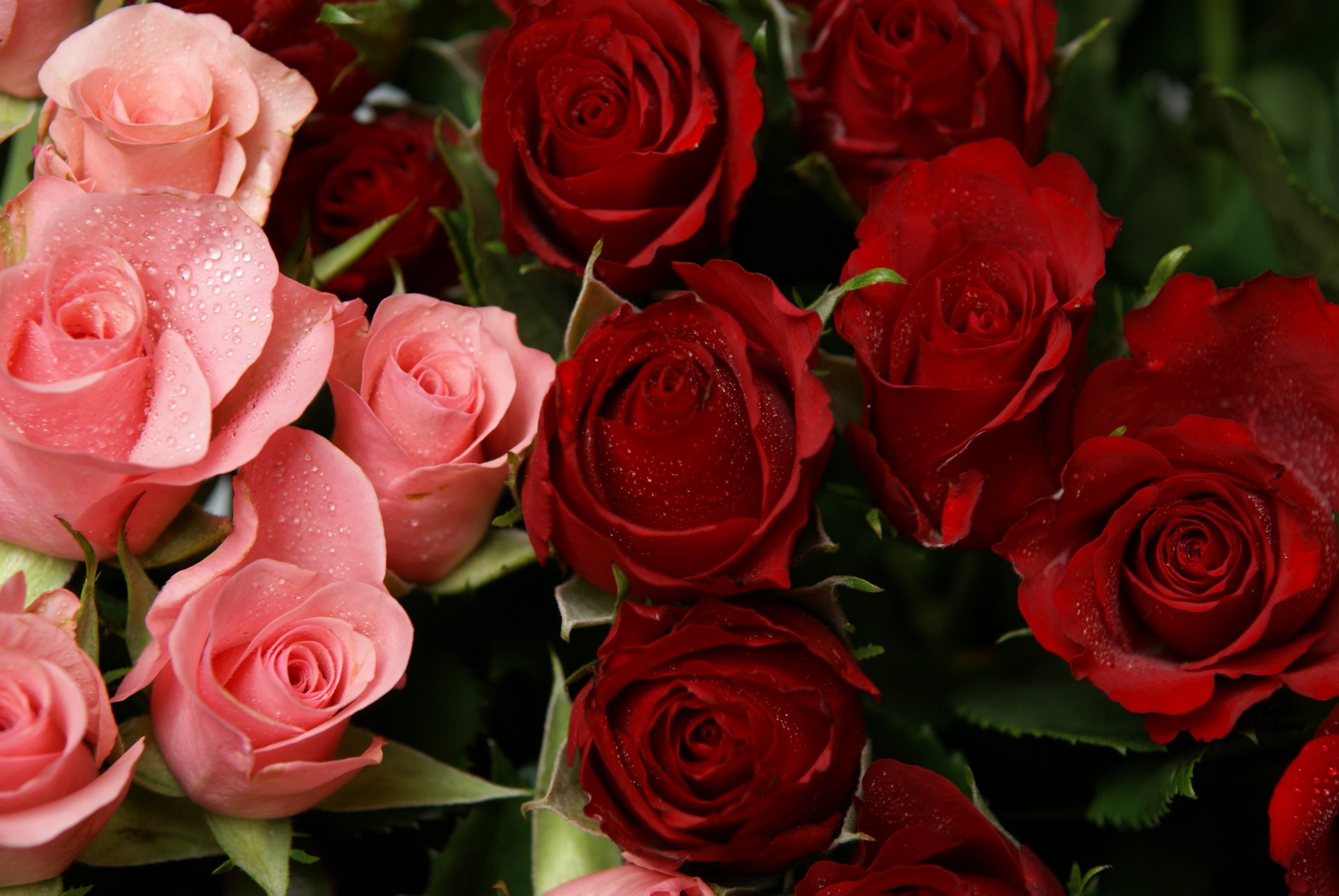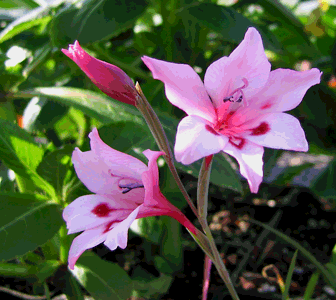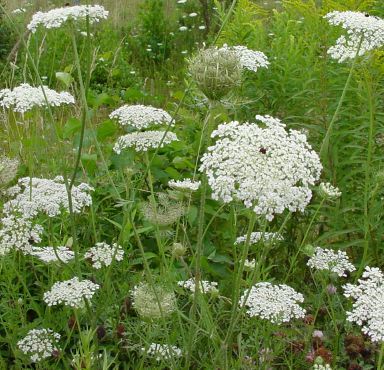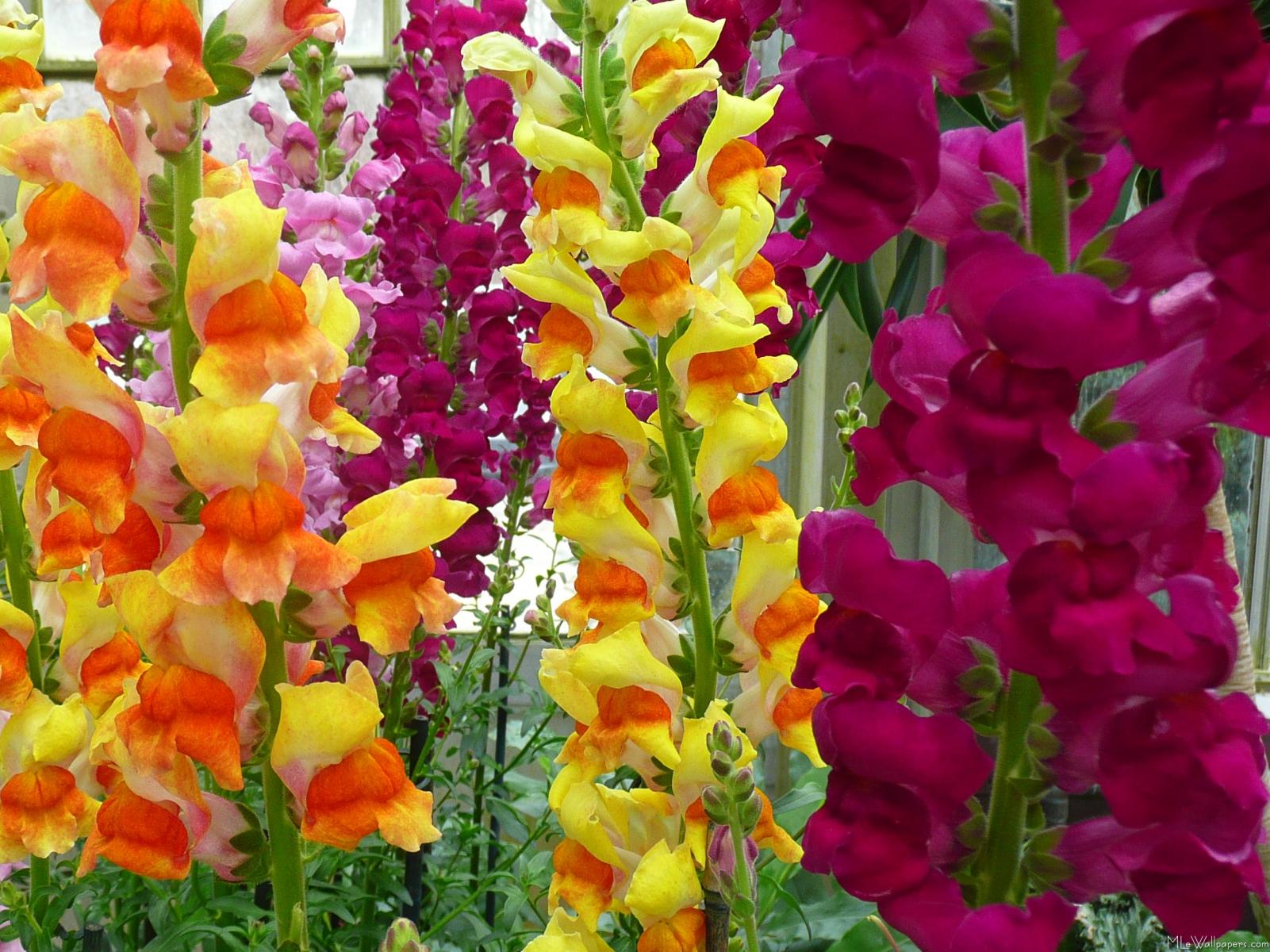Kinds Of Flower's
Thursday 21 March 2013
Tuesday 26 February 2013
Kinds Of Flower's
 From earliest times, flowers have held a special place in
From earliest times, flowers have held a special place in people's lives as observed in art, jewelry, stories and
paintings. Throughout the centuries a rich symbolism as
grown up around plants and their flowers. People used
them to represent love and desire, events, feast days,
birthdays and celebrations of all kinds. Even though much
of the symbolism has been lost we still use flowers and
plants in agreement with their age old symbolism. As an example, flowers continue to be used as love tokens because of their ability to stimulate us to open our hearts to love.
Scientists say there are over 270,000 species of flowers that have been documented and are living in the 21st Century. But scientists have yet to answer basic questions about these marvels of beauty... What led to their amazing diversity? Are there flowers that have not changed much during the evolution of this planet?
The first plant fossils found were woody magnolia-like plants dating back 93 million years. Paleobotanists have more recently uncovered tiny herb-like flower fossils dating back 120 million years. Flowering plants, called angiosperms by scientists, were believed to be already diverse and found in most locations by the middle of the Cretaceous period… 146 million years ago. A myriad of images of preserved flowers and flower parts [in very fine detail] have been found in fossils located in Sweden, Portugal, England, and along the Eastern and Gulf coasts of the United States. Below are a few brief histories of some of today’s best loved flowers.
The first plant fossils found were woody magnolia-like plants dating back 93 million years. Paleobotanists have more recently uncovered tiny herb-like flower fossils dating back 120 million years. Flowering plants, called angiosperms by scientists, were believed to be already diverse and found in most locations by the middle of the Cretaceous period… 146 million years ago. A myriad of images of preserved flowers and flower parts [in very fine detail] have been found in fossils located in Sweden, Portugal, England, and along the Eastern and Gulf coasts of the United States. Below are a few brief histories of some of today’s best loved flowers.
Dictionaries were written to explain this language to all, and were especially used by "lovers." One could learn that "ROSES" symbolized love, in general, but each variety and color had each, his own meaning. The "LILY," generally symbolized beauty, but it also has many varieties, thus many diversified meanings. Consider the quandary that could have developed if lover’s used two "different" dictionaries--- with each possibly having its own connotation. There could, potentially, be some real misunderstandings! So, we see the importance of acquiring accurate information in this regard.
Those of the Victorian era liked to make up bouquets. Tussie-Mussies were generally very well liked gifts. These were small bouquets of flowers wrapped in a lace doily and tied with satin. The intrigue of secret messages sent this way, became a popular pastime.
Today, one may find it difficult to express his true feelings. One may wonder, "How do I say I love you?" or "I want to be your friend" or "You are special." If one is gifted in such a way, he could compose a song, or write a poem. Or, he could do something much easier and more significant… he could give flowers!
Alstroemeria
Alstroemeria is named after the Swedish botanist Baron Klas von Alstroemer.
This South American flower´s seeds were among many collected by von Alstroemer on a trip to Spain in 1753.
Alstroemeria is named after the Swedish botanist Baron Klas von Alstroemer.
This South American flower´s seeds were among many collected by von Alstroemer on a trip to Spain in 1753.
Aster
Asters were laid on the graves of French soldiers to symbolize the wish that things turned out differently.
Calendula
The Romans used Calendula mixed with vinegar to season their meat and salad dishes.
Calendula blossoms in wine were purported to soothe indigestion, and the petals as ointments, cured skin irritations, jaundice, sore eyes, and toothaches.
Carnations
These flowers were used in Greek ceremonial crowns.
Carnation, comes from Greece... carnis(flesh) refers to the original color of the flower, or perhaps the word incarnacyon(incarnation), which refers to the incarnation of God made flesh.
Chrysanthemums
Japanese emperors sat upon the Chrysanthemum throne.
They put a single chrysanthemum petal on the bottom of a wine glass to sustain a long and healthy life.
In Italy Chrysanthemums are associated with death.
Beautiful gold hairpins, each ending in a daisy-like ornament were found when the Minoan palace on the Island of Crete was excavated.
Lily
Lilies have been associated with many ancient myths, and pictures of lilies were discovered in a villa in Crete, dating back to the Minoan Period, about 1580 B.C.
Lilies are mentioned in the Old Testament, and in the New Testament, they symbolize chastity and virtue.
In both the Christian and pagan traditions, the lily is a fertility symbol.
In Greek marriage ceremonies the bride wears a crown of lilies and wheat implying purity and abundance.
Rose
The first cultivated roses appeared in Asian gardens more than 5,000 years ago.
In ancient Mesopotamia, Sargon I, King of the Akkadians (2684-2630 B.C.) brought "vines, figs and rose trees" back from a military expedition beyond the River Tigris.
Confucius wrote that during his life (551-479 B.C.), the Emperor of China owned over 600 books on the culture of Roses.
Roses were introduced to Rome by the Greeks.
During Roman public games all the streets were strewn with rose petals.
Egyptian wall paintings depicting roses have been found in tombs dating from the fifth century B.C. to Cleopatra´s time.
Cleopatra had a passion for everything Roman, and she is said to have scattered rose petals before Mark Anthony´s feet.
Roses were introduced to Europe during the Roman Empire, where they were mainly used for ornamental purposes.
Early Christians saw the rose as a symbol of paganism, orgy, and lust.
King Childebert I had a rose garden planted for his Queen in Paris.
Charlemagne ordered the cultivation of Roses.
Leo IX, elected Pope in 1084, sent a Golden Rose to favored monarchs.
Daisy
Daisy flowers are believed to be more than 4000 years old.
Egyptian ceramics are also decorated with Daisies.
"Marguerite", the French word for Daisy, is derived from a Greek word meaning "pearl".
Francis I called his sister Marguerite of Marguerites and the lady used the Daisy as her device, so did Margaret of Anjou the wife of Henry IV and Margaret Beaufort, mother of Henry VII.
Dahlia
A herbal document written in Latin just sixty years after the coming of Columbus was discovered 1929.
It noted that the Aztecs used dahlias as a treatment for epilepsy.
Dahlias were late in coming to Europe.
European scientific specialists considered the dahlia as a possible source of food since a disease had destroyed the French potato crop in the 1840s.
Between 1800 and 1805, Lord and Lady Holland lived in France and in Spain where Lady Holland first saw dahlias that had been introduced to Spain about 15 years before.
She sent some home to England and introduced the Dahlia into England.
Delphinium
Delphinium comes from the Greek word delphis, meaning dolphin - the flower resembles the bottle-like nose of a dolphin.
Delphiniums were used by West Coast Native Americans to make blue dye, and European settlers made ink from ground delphinium flowers.
The most ancient use of Delphinium flowers was a strong external concoction thought to drive away scorpions.
Gladiolus
The Latin word gladius, meaning "sword," and this flower was named for the shape of its leaves.
Gladiolus was also called "xiphium," from the Greek word xiphos, also meaning sword.
This flower is said to have represented the Roman gladiators. British Gladiolus used the stem base (corms) as a poultice and for drawing out thorns and splinters.
In the 18th century, African Gladioli were imported in large quantities to Europe from South Africa.
Holly
Medieval monks called this plant the Holy Tree.
They believed Holly would keep evil spirits away, and protect their home from lightening.
The early Romans decorated their hallways with garlands made from Holly for their mid-winter feast, Saturnalia.
Later its pointed leaves represented the crown of thorns worn by Jesus, and the red berries his drops of blood.
Poinsettia
Dr. Joel Roberts-Poinsett, the US Ambassador to Mexico, brought the first poinsettia to the United States in 1928.
Because Mexican legends say its bracts resemble the flower of Bethlehem, Poinsettias have the honor of decorating churches at Christmas time.
Today, this flower is known worldwide as "the Christmas flower".
This plant was used during the Medieval times as a purgative to rid the body of black bile and melancholy.
Queen Anne´s Lace
Queen Anne´s Lace was named for Queen Anne, wife of King James I of England.
The Queen´s friends challenged her to create lace as beautiful as the flower.
North African natives chewed it to protect themselves from the sun.
Snap Dragons
Snapdragons were common in the earliest gardens, but their actual origin is not known.
Some botanists believe they grew wild in Spain and Italy.
Sun Flower
Because Mexican legends say its bracts resemble the flower of Bethlehem, Poinsettias have the honor of decorating churches at Christmas time.
Today, this flower is known worldwide as "the Christmas flower".
This plant was used during the Medieval times as a purgative to rid the body of black bile and melancholy.
Queen Anne´s Lace
Queen Anne´s Lace was named for Queen Anne, wife of King James I of England.
The Queen´s friends challenged her to create lace as beautiful as the flower.
North African natives chewed it to protect themselves from the sun.
Snap Dragons
Snapdragons were common in the earliest gardens, but their actual origin is not known.
Some botanists believe they grew wild in Spain and Italy.
Sun Flower
Sunflowers originated in Central and South America, and were grown for their usefulness, not their beauty.
In 1532 Francisco Pizarro reported seeing the natives of the Inca Empire in Peru worshipping a giant sunflower.
Incan priestesses wore large sunflower disks made of gold on their garments.
Tulip
Over a thousand years ago, Tulips grew wild in Persia, and near Kabul the Great Mogul Baber counted thirty-three different species.
The word 'Tulip' is thought to be a corruption of the Turkish word for turbans.
Persian poets sang its praises, and their artists drew and painted it so often, that all of Europe considered the Tulip to be the symbol of the Ottoman Empire.
Wealthy people began to purchase tulip bulbs that were brought back from Turkey by Venetian merchants.
In 1610, fashionable French ladies wore corsages of tulips, and many fabrics were decorated with tulip designs.
In the seventeenth century, a small bed of tulips was valued at 15,000-20,000 francs.
Tulipmania flourished between 1634-1637... just like the California Gold Rush, people abandoned jobs, businesses, wives, homes and lovers to become tulip growers.
The frenzy spread from France, through Europe to the Low Countries.
Violets
When Napoleon married Josephine, she wore Violets, and on each anniversary Josephine received a bouquet of violets.
Following Napoleon´s lead, the French Bonapartists chose the violet as their emblem, and nicknamed Napoleon "Corporal Violet".
In 1814, Napoleon asked to visit Josephine's tomb before being exiled to the Island of St. Helena.
When he died, he wore a locket around his neck that contained violets he had picked from Josephine´s grave site.
In 1532 Francisco Pizarro reported seeing the natives of the Inca Empire in Peru worshipping a giant sunflower.
Incan priestesses wore large sunflower disks made of gold on their garments.
Tulip
Over a thousand years ago, Tulips grew wild in Persia, and near Kabul the Great Mogul Baber counted thirty-three different species.
The word 'Tulip' is thought to be a corruption of the Turkish word for turbans.
Persian poets sang its praises, and their artists drew and painted it so often, that all of Europe considered the Tulip to be the symbol of the Ottoman Empire.
Wealthy people began to purchase tulip bulbs that were brought back from Turkey by Venetian merchants.
In 1610, fashionable French ladies wore corsages of tulips, and many fabrics were decorated with tulip designs.
In the seventeenth century, a small bed of tulips was valued at 15,000-20,000 francs.
Tulipmania flourished between 1634-1637... just like the California Gold Rush, people abandoned jobs, businesses, wives, homes and lovers to become tulip growers.
The frenzy spread from France, through Europe to the Low Countries.
Violets
When Napoleon married Josephine, she wore Violets, and on each anniversary Josephine received a bouquet of violets.
Following Napoleon´s lead, the French Bonapartists chose the violet as their emblem, and nicknamed Napoleon "Corporal Violet".
In 1814, Napoleon asked to visit Josephine's tomb before being exiled to the Island of St. Helena.
When he died, he wore a locket around his neck that contained violets he had picked from Josephine´s grave site.
Subscribe to:
Posts (Atom)


